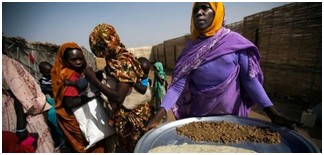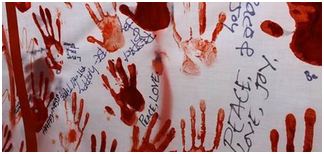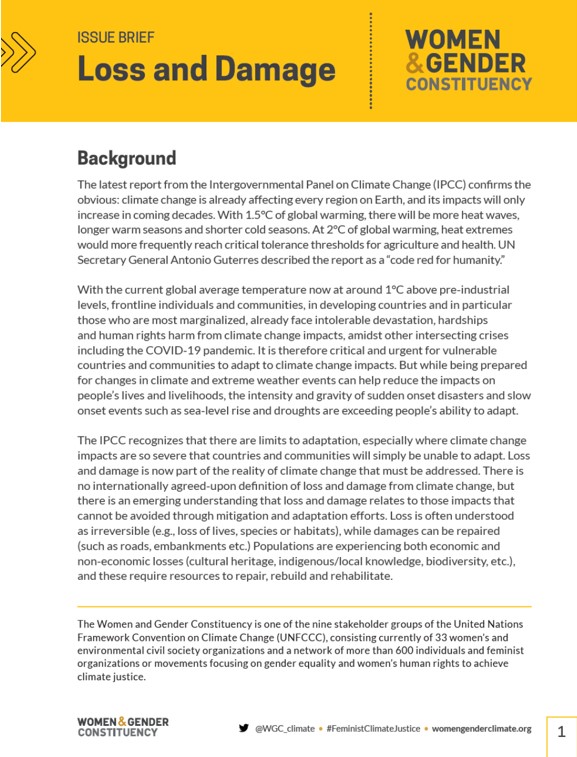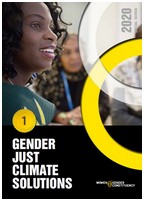How Data Can Stop Women from Going Hungry
Извор: WUNRN – 14.07.2020

A woman prepares a tray with lentils and cereals at a food distribution center in Tawilla, North Darfur, Sudan. Photo by: Albert Gonzalez Farran / UNAMID / CC BY-NC-ND
By Helen Castell // 13 July 2020
LONDON — Good data is key to understanding — and ultimately dismantling — the complex relationships between hunger, inequality, and disempowerment that women and girls in many parts of the world experience, according to Jacqueline Paul, senior gender adviser at the World Food Programme.
Women represent roughly 60% of the 821 million people who are chronically undernourished, and there are fears that both figures could rise during the current pandemic.
Gender-based food inequity is regularly attributed to women’s lower economic resources and autonomy; the heavier burden of caring responsibilities and other unpaid labor; and increased vulnerability to violence and exploitation. The global development community’s understanding of such correlations has, however, long been hindered by a reliance on flawed data collection methods. Persuading policymakers to act on conclusions that have been based on mostly qualitative or anecdotal data is also difficult, Paul noted.
“Under the framework of the 2020 Agenda, where we talk about leaving no one behind and reaching the furthest behind first, how do you do that if you don’t know who those individuals are? How can we deal with crises, such as COVID-19, if we don’t have data that can tell us about people’s situations, risks, capacities, networks, needs, and priorities?”
Paul sat down with Devex to discuss the gender equality for food security measure, its findings, its potential use for policymakers, as well as the importance of partnerships.
This conversation has been edited for length and clarity.
How can data help us understand how food insecurity impacts men and women differently? And what are some of the challenges in terms of collecting and analyzing it effectively?
WFP’s motto is “saving lives, changing lives.” You can’t do that if you’re flying blind. We — WFP and the rest of the humanitarian and development community — need better data so that we have better policies and programs that make a difference.
One of the challenges of gathering useful data is getting rid of practices from the past that are no longer compatible with our evolving technology, knowledge, capacities, and awareness of the intersectionality of inequalities.
For example, data-collection methods like head of household surveys, based on outdated notions that a household is homogenous or that there even is a head of household, are redundant and misleading.
In reality, not everyone in the same household consumes the same amount or quality of food, has the same coping strategies, or is empowered equally to make decisions. If we can let go of these patriarchal, archaic notions about the household, we will go a long way in having better data.
How does the GE4FS approach the challenge differently and what are the findings so far?
What is the GE4FS?
In 2018, WFP and partners Gallup and the Food and Agriculture Organization launched the gender equality for food security, or the GE4FS, measure.
http://www.fao.org/3/a-i7835e.pdf
Covering 17 countries so far, the GE4FS combines FAO’s food insecurity experience scale, or FIES, and a gender equality component that assesses the empowerment of over 17,000 women and men based on their answers to questions around decision-making ability, financial self-sufficiency, freedom from violence, reproductive freedom, and unpaid labor.
One of the reasons why we created the GE4FS is that there still wasn’t anything on a quantitative level that connected food insecurity or hunger with gender equality at the individual-level.
What our GE4FS data show already is the direct link between empowerment and not being hungry, which in most of the 17 countries, extends to a link between gender inequalities and food insecurity. Pooled and country-level data gathered so far tell us that the provision of food is not sufficient to reduce or eliminate hunger. Rather, we need to understand and address the multiple factors feeding into individuals’ empowerment and equality, which are colored by gender.
When we looked at the data, we found that men are more likely to be empowered than women, and women are likely to be more hungry than men, but also that the impact of empowerment on hunger is the same for women and men — as your empowerment level increases, your hunger decreases and your food security increases, whether you’re a woman or a man.
Another thing we were able to extract was that while gender is the most significant influencer on food security, also age, education, and location matter. However, they matter differently for women and men and their influence differs between countries.
How do the GE4FS findings help us understand women’s experience of COVID-19 and its likely impacts?
We already know that women have restricted access to resources, they’re in the employment sectors that have been hit harder by COVID-19 and they’re experiencing higher rates of domestic violence. Also, in terms of caring responsibilities and domestic work, who’s picking up the load linked to COVID-19 measures? It’s w
One of the biggest standouts from the GE4FS data is the significance of unpaid care and domestic work and how reducing that makes a huge difference to the empowerment of women. This is something that was also highlighted by the IWDA’s individual deprivation measure, or IDM, including the data from the Solomon Islands that was collected immediately before COVID-19 hit.
Although there has historically been a focus on women’s paid work and presence in the public sphere, there is often reluctance to explore what’s considered to be the private sphere of people’s lives.
A common automatic response is that conducting time-use surveys — an established way of measuring unpaid labor — is too expensive and time-consuming. But on what basis has that conclusion been drawn? How much is politics and power behind the notion that we can’t invest in this?
We need to look at the private sphere because rights are exercised and curtailed in all spheres. If we’re not putting out a hypothesis around constructs like head of household and then systematically challenging it, are we perpetuating myths or partial truths that are serving certain sectors of our societies?
Relying on misleading data rather than investing in good data is also hugely harmful. There’s the sin of omission — that we’re not seeing discrimination, abuse, or marginalization, so can’t take action against it. And there’s the sin of commission — that we compound what are deemed to be truths.
“Under the framework of the 2020 Agenda, where we talk about leaving no one behind and reaching the furthest behind first, how do you do that if you don’t know who those individuals are? How can we deal with crises, such as COVID-19, if we don’t have data that can tell us about people’s situations, risks, capacities, networks, needs, and priorities?”
— Jacqueline Paul, senior gender adviser, WFP
How can better quality data be used practically?
Numbers matter. People pay attention to numbers. They’re crucial for helping decision-makers develop effective and value-for-money policies and programs.
You can apply our measure at different levels. At the national level, doing a random sample across a population could highlight issues — for example, a lack of economic resilience among women — that needs to be explored more deeply and prioritized for tackling. When WFP does assessments at the national, sub-national, and community levels, we can integrate the measure to understand better how its findings layer on top of other issues such as climate shocks and then delve deeper.
It’s still important to combine quantitative data with qualitative analysis, which can be too easily dismissed. It’s about trying to bridge that gap to say to policymakers and programmers, “Look, this is an issue. Here’s the data. Now let’s take a better look at it, including with intersectional analyses.”
Partnerships are key here. They’re one of the foundations from which we operate. It’s vital that we’re not working in vacuums, isolated from reality and creating things that no one’s going to use. As part of our work on the GE4FS measure, we created a technical advisory group of representatives from research institutions, international NGOs, and governments to get their thoughts and their ideas. Being able to tap FAO’s statistical expertise around individual-level food insecurity measures, as well as Gallup’s long-standing history around data and surveys, has been invaluable.
At a time of crisis, like now, when we are talking literally about life and death and a massive increase in the number of people who go hungry in this world, we cannot assume there is just one answer. Simple solutions are not going to get us to sustainable outcomes. If we really believe everyone’s lives matter, we need to be working in everything we do from a human rights and a gender justice basis.



